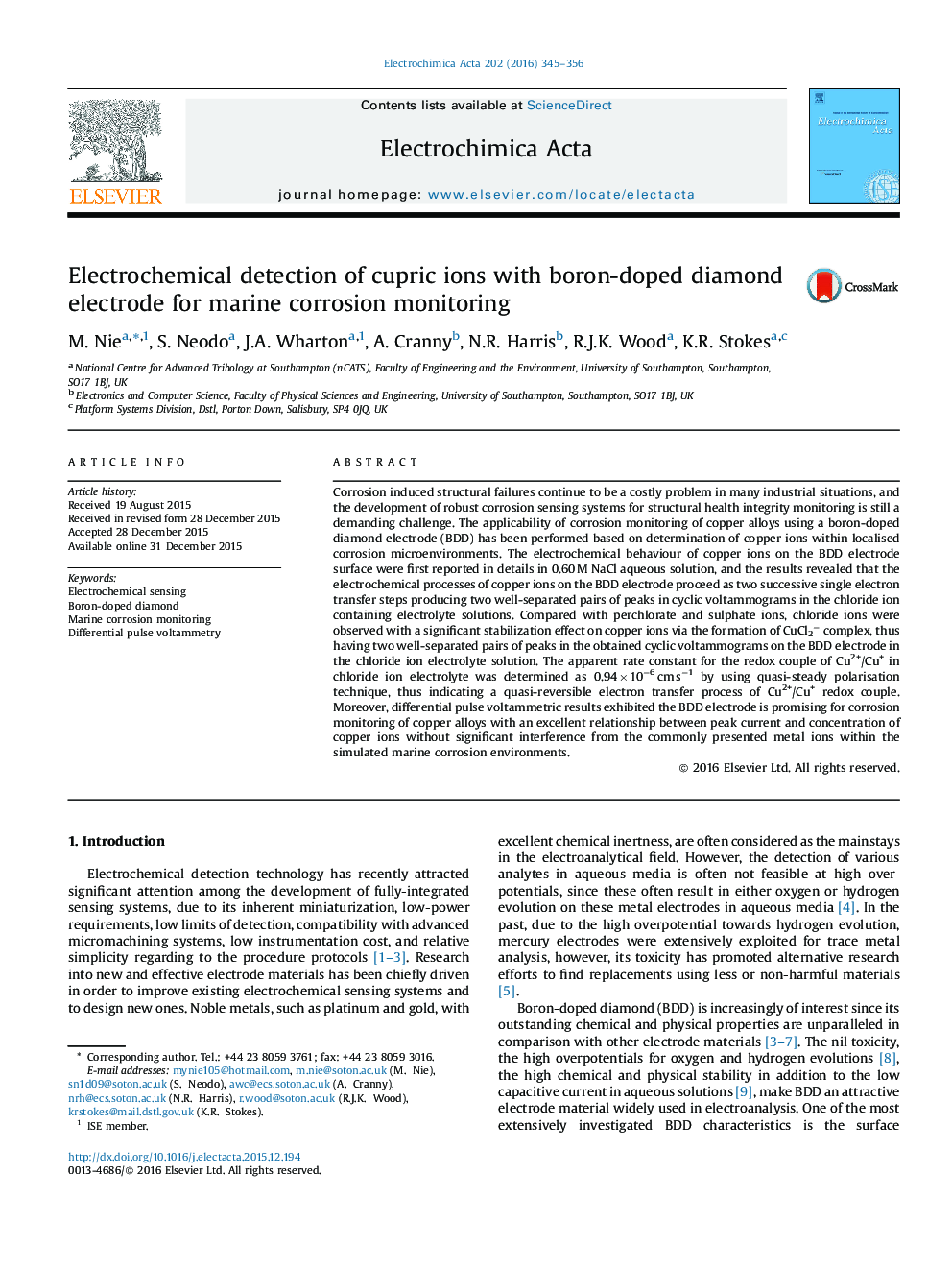| Article ID | Journal | Published Year | Pages | File Type |
|---|---|---|---|---|
| 183087 | Electrochimica Acta | 2016 | 12 Pages |
Corrosion induced structural failures continue to be a costly problem in many industrial situations, and the development of robust corrosion sensing systems for structural health integrity monitoring is still a demanding challenge. The applicability of corrosion monitoring of copper alloys using a boron-doped diamond electrode (BDD) has been performed based on determination of copper ions within localised corrosion microenvironments. The electrochemical behaviour of copper ions on the BDD electrode surface were first reported in details in 0.60 M NaCl aqueous solution, and the results revealed that the electrochemical processes of copper ions on the BDD electrode proceed as two successive single electron transfer steps producing two well-separated pairs of peaks in cyclic voltammograms in the chloride ion containing electrolyte solutions. Compared with perchlorate and sulphate ions, chloride ions were observed with a significant stabilization effect on copper ions via the formation of CuCl2− complex, thus having two well-separated pairs of peaks in the obtained cyclic voltammograms on the BDD electrode in the chloride ion electrolyte solution. The apparent rate constant for the redox couple of Cu2+/Cu+ in chloride ion electrolyte was determined as 0.94 × 10−6 cm s−1 by using quasi-steady polarisation technique, thus indicating a quasi-reversible electron transfer process of Cu2+/Cu+ redox couple. Moreover, differential pulse voltammetric results exhibited the BDD electrode is promising for corrosion monitoring of copper alloys with an excellent relationship between peak current and concentration of copper ions without significant interference from the commonly presented metal ions within the simulated marine corrosion environments.
